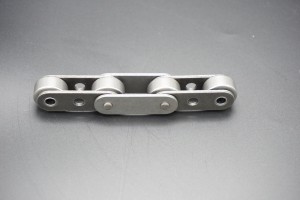Roller chains are vital components in a variety of applications including industrial machinery, automobiles and even bicycles. They are widely used to transmit power smoothly and efficiently. However, when it comes to heavy-duty applications, such as heavy machinery or agricultural equipment, heavier roller chains are required. In this case, a common question arises: Can a standard sprocket handle the load imposed by a heavy-duty roller chain? In this blog, we will explore this topic in more depth and explore the compatibility between heavy duty roller chains and standard sprockets.
Learn about roller chains and sprockets
Before discussing the compatibility aspect, let’s first understand what roller chains and sprockets are. Roller chains consist of a series of cylindrical rollers joined together with plates. These rollers fit into the teeth of a sprocket, a special gear designed with evenly spaced teeth. The sprockets mesh with the rollers of the roller chain, transferring rotational motion from one shaft to the other.
Can standard sprockets handle heavy roller chains?
The answer to this question is not simple. It depends on various factors such as load capacity, pitch size and structural robustness. Standard sprockets are usually designed to accommodate moderate to heavy loads without failure. However, heavy-duty roller chains apply higher loads and have thicker plates, requiring sprockets specifically designed for heavy-duty applications.
factors to consider
1. Load capacity: Heavy duty roller chains are specially designed to withstand higher loads and torques than standard roller chains. Standard sprockets may not have the same load capacity as heavy-duty sprockets, which can lead to premature failure or damage.
2. Pitch: The pitch of the roller chain refers to the distance between the rollers. Heavy-duty roller chains typically have larger pitch sizes and require sprockets with corresponding tooth profiles to ensure proper meshing and smooth operation.
3. Sprocket Material and Construction: Another key consideration is the material and construction of the sprocket itself. Heavy-duty sprockets are usually made of high-grade alloys or hardened steel to withstand the increased stress and wear caused by heavy-duty roller chains.
4. Alignment and Proper Installation: Proper alignment of the sprockets and roller chain is critical to ensure optimum performance and service life. Misalignment can lead to premature wear, noise, and even chain failure.
in conclusion
For heavy roller chains, using standard sprockets can be risky and could result in failure or damage. Consultation with the manufacturer or an industry expert is recommended to determine the specific requirements of your heavy-duty application. Investing in heavy-duty sprockets designed to handle the loads imposed by heavy-duty roller chains will ensure smooth and reliable operation.
If you are unsure about the compatibility between roller chain and sprockets for your particular application, it is best to err on the side of caution and choose sprockets that are specifically designed for heavy-duty use. Prioritizing compatibility and investing in the proper components will not only improve overall performance, but also prevent unexpected failures and costly downtime.
Remember that proper maintenance and regular inspections are essential to ensure the longevity and reliability of your roller chain and sprocket systems.
Post time: Jul-04-2023

